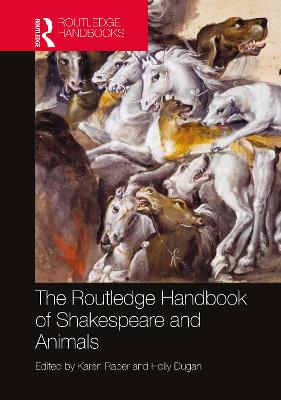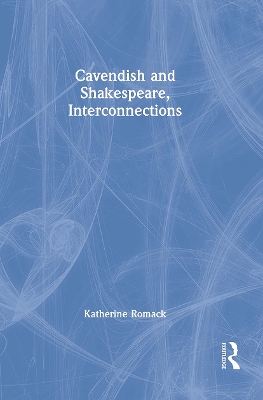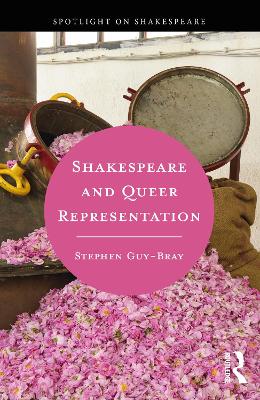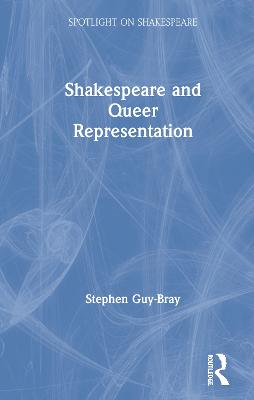Routledge Handbook of Shakespeare and Animals
 -10%
portes grátis
-10%
portes grátis
Routledge Handbook of Shakespeare and Animals
Raber, Karen; Dugan, Holly
Taylor & Francis Ltd
08/2020
352
Dura
Inglês
9781138710160
15 a 20 dias
830
Descrição não disponível.
Introduction.
Part 1. Animal Metaphors: History, Theory, Representation
Headnote 1
Chapter 1 Rebecca Ann Bach, "Avian Shakespeare"
Chapter 2 Daniel Brayton, "Shakespeare's Fishponds: Matter, Metaphor, and Market"
Chapter 3 Bryan Alkemeyer, "'I am the dog': Canine Abjection, Species Reversal, and Misanthropic Satire
in Two Gentlemen of Verona
Chapter 4 Crystal Bartolovich, "Learning from Crab: Primitive Accumulation, Migration, Species Being "
Chapter 5 Karl Steel, "Animal Behavior and Metaphor, in Shakespeare and His Fellow Dramatists"
Part 2. Scales of Meaning
Headnote 2
Chapter 6 Ian MacInnes, "Cow-Cross Lane and Curriers Row: Animal Networks in Early Modern England"
Chapter 7 Benjamin Bertram, "'Everything exists by strife': War and Creaturely Violence in Shakespeare's Late Tragedies"
Chapter 8 Lucinda Cole, "Zoonotic Shakespeare: Animals, Plagues, and the Medical Posthumanities"
Chapter 9 Joseph Campana, "Flock, Herd, Swarm: A Shakespearean Lexicon of Creaturely Collectivity"
Part 3. Animal Worlds/ Animal Language
Headnote 3
Chapter 10 Keith Botelho, "Swarm Life: Shakespeare's School of Insects"
Chapter 11 Nicole Jacobs, "'Where the Bee Sucks': Bernardian Ecology and the Post-Reformation Animal"
Chapter 12 Liza Blake and Kathryn Vomero Santos, "What Does the Wolf Say?: Wolvish Tongues and Animal Language in Coriolanus"
Chapter 13 Bruce Boehrer, "Shrewd Shakespeare"
Part 4. Training, Performance, and Living with Animals
Headnote 4
Chapter 14 Elspeth Graham, "The Training Relationship: horses, hawks, dogs, bears and humans"
Chapter 15 Todd Borlik, "Performing The Winter's Tale in the 'Open': Bear Plays, Skinners' Pageants, and the Early Modern Fur Trade
Chapter 16 Julian Yates, "Counting Shakespeare's Sheep with The Second Shepherd's Play"
Chapter 17 Laurie Shannon, "Silly Creatures: King Lear (with Sheep)"
Part 5. Animal Boundaries and Identities
Headnote 5
Chapter 18 Nicole Mennell, "The Lion King: Shakespeare's Beastly Sovereigns"
Chapter 19 Jennifer Reid, "'Wearing the Horn': Class and Community in the Shakespearean Hunt"
Chapter 20 Steven Swarbrick, "On Eating--the Animal That Therefore I Am: Race and Animal Rites in Titus Andronicus"
Chapter 21 Rob Wakeman, "'What's this? what's this?': Stockfish and Piscine Sexuality in Measure for Measure"
Chapter 22 Karen Raber, "My Palfrey, Myself: Toward a Queer Phenomenology of the Horse-Human Bond in Henry V and Beyond"
Chapter 23 Erica Fudge, "'Forgiveness, horse': The Barbaric World of Richard II"
Appendix
Part 1. Animal Metaphors: History, Theory, Representation
Headnote 1
Chapter 1 Rebecca Ann Bach, "Avian Shakespeare"
Chapter 2 Daniel Brayton, "Shakespeare's Fishponds: Matter, Metaphor, and Market"
Chapter 3 Bryan Alkemeyer, "'I am the dog': Canine Abjection, Species Reversal, and Misanthropic Satire
in Two Gentlemen of Verona
Chapter 4 Crystal Bartolovich, "Learning from Crab: Primitive Accumulation, Migration, Species Being "
Chapter 5 Karl Steel, "Animal Behavior and Metaphor, in Shakespeare and His Fellow Dramatists"
Part 2. Scales of Meaning
Headnote 2
Chapter 6 Ian MacInnes, "Cow-Cross Lane and Curriers Row: Animal Networks in Early Modern England"
Chapter 7 Benjamin Bertram, "'Everything exists by strife': War and Creaturely Violence in Shakespeare's Late Tragedies"
Chapter 8 Lucinda Cole, "Zoonotic Shakespeare: Animals, Plagues, and the Medical Posthumanities"
Chapter 9 Joseph Campana, "Flock, Herd, Swarm: A Shakespearean Lexicon of Creaturely Collectivity"
Part 3. Animal Worlds/ Animal Language
Headnote 3
Chapter 10 Keith Botelho, "Swarm Life: Shakespeare's School of Insects"
Chapter 11 Nicole Jacobs, "'Where the Bee Sucks': Bernardian Ecology and the Post-Reformation Animal"
Chapter 12 Liza Blake and Kathryn Vomero Santos, "What Does the Wolf Say?: Wolvish Tongues and Animal Language in Coriolanus"
Chapter 13 Bruce Boehrer, "Shrewd Shakespeare"
Part 4. Training, Performance, and Living with Animals
Headnote 4
Chapter 14 Elspeth Graham, "The Training Relationship: horses, hawks, dogs, bears and humans"
Chapter 15 Todd Borlik, "Performing The Winter's Tale in the 'Open': Bear Plays, Skinners' Pageants, and the Early Modern Fur Trade
Chapter 16 Julian Yates, "Counting Shakespeare's Sheep with The Second Shepherd's Play"
Chapter 17 Laurie Shannon, "Silly Creatures: King Lear (with Sheep)"
Part 5. Animal Boundaries and Identities
Headnote 5
Chapter 18 Nicole Mennell, "The Lion King: Shakespeare's Beastly Sovereigns"
Chapter 19 Jennifer Reid, "'Wearing the Horn': Class and Community in the Shakespearean Hunt"
Chapter 20 Steven Swarbrick, "On Eating--the Animal That Therefore I Am: Race and Animal Rites in Titus Andronicus"
Chapter 21 Rob Wakeman, "'What's this? what's this?': Stockfish and Piscine Sexuality in Measure for Measure"
Chapter 22 Karen Raber, "My Palfrey, Myself: Toward a Queer Phenomenology of the Horse-Human Bond in Henry V and Beyond"
Chapter 23 Erica Fudge, "'Forgiveness, horse': The Barbaric World of Richard II"
Appendix
Este título pertence ao(s) assunto(s) indicados(s). Para ver outros títulos clique no assunto desejado.
Follow;ecocriticism;Animal Studies;material studies;Early Modern;hunting;Richard III;natural law;OED;renaissance;Nonhuman Creatures;Critical Animal Studies;animality;Andronicus;posthuman;Violates;posthumanism;Shakespeare's Animal;ecostudies;Gloucester;animal lives;Winter's Tale;animal influence;Midsummer Night's Dream;bear bating;Henry IV;human and animal relationships;Young Men;drama;Richard II;ecology;Wo;environment;Held;language;Chine;bestiality;Ducked;gender;Talbot;identity;Wandering;myth;Titus Andronicus;religion;Shakespeare's Titus Andronicus;humanism;Agas Map;death;bestiary;land animals;sea creatures;animal metaphors;Shakespeare's fishponds;Shakespeare's plays
Introduction.
Part 1. Animal Metaphors: History, Theory, Representation
Headnote 1
Chapter 1 Rebecca Ann Bach, "Avian Shakespeare"
Chapter 2 Daniel Brayton, "Shakespeare's Fishponds: Matter, Metaphor, and Market"
Chapter 3 Bryan Alkemeyer, "'I am the dog': Canine Abjection, Species Reversal, and Misanthropic Satire
in Two Gentlemen of Verona
Chapter 4 Crystal Bartolovich, "Learning from Crab: Primitive Accumulation, Migration, Species Being "
Chapter 5 Karl Steel, "Animal Behavior and Metaphor, in Shakespeare and His Fellow Dramatists"
Part 2. Scales of Meaning
Headnote 2
Chapter 6 Ian MacInnes, "Cow-Cross Lane and Curriers Row: Animal Networks in Early Modern England"
Chapter 7 Benjamin Bertram, "'Everything exists by strife': War and Creaturely Violence in Shakespeare's Late Tragedies"
Chapter 8 Lucinda Cole, "Zoonotic Shakespeare: Animals, Plagues, and the Medical Posthumanities"
Chapter 9 Joseph Campana, "Flock, Herd, Swarm: A Shakespearean Lexicon of Creaturely Collectivity"
Part 3. Animal Worlds/ Animal Language
Headnote 3
Chapter 10 Keith Botelho, "Swarm Life: Shakespeare's School of Insects"
Chapter 11 Nicole Jacobs, "'Where the Bee Sucks': Bernardian Ecology and the Post-Reformation Animal"
Chapter 12 Liza Blake and Kathryn Vomero Santos, "What Does the Wolf Say?: Wolvish Tongues and Animal Language in Coriolanus"
Chapter 13 Bruce Boehrer, "Shrewd Shakespeare"
Part 4. Training, Performance, and Living with Animals
Headnote 4
Chapter 14 Elspeth Graham, "The Training Relationship: horses, hawks, dogs, bears and humans"
Chapter 15 Todd Borlik, "Performing The Winter's Tale in the 'Open': Bear Plays, Skinners' Pageants, and the Early Modern Fur Trade
Chapter 16 Julian Yates, "Counting Shakespeare's Sheep with The Second Shepherd's Play"
Chapter 17 Laurie Shannon, "Silly Creatures: King Lear (with Sheep)"
Part 5. Animal Boundaries and Identities
Headnote 5
Chapter 18 Nicole Mennell, "The Lion King: Shakespeare's Beastly Sovereigns"
Chapter 19 Jennifer Reid, "'Wearing the Horn': Class and Community in the Shakespearean Hunt"
Chapter 20 Steven Swarbrick, "On Eating--the Animal That Therefore I Am: Race and Animal Rites in Titus Andronicus"
Chapter 21 Rob Wakeman, "'What's this? what's this?': Stockfish and Piscine Sexuality in Measure for Measure"
Chapter 22 Karen Raber, "My Palfrey, Myself: Toward a Queer Phenomenology of the Horse-Human Bond in Henry V and Beyond"
Chapter 23 Erica Fudge, "'Forgiveness, horse': The Barbaric World of Richard II"
Appendix
Part 1. Animal Metaphors: History, Theory, Representation
Headnote 1
Chapter 1 Rebecca Ann Bach, "Avian Shakespeare"
Chapter 2 Daniel Brayton, "Shakespeare's Fishponds: Matter, Metaphor, and Market"
Chapter 3 Bryan Alkemeyer, "'I am the dog': Canine Abjection, Species Reversal, and Misanthropic Satire
in Two Gentlemen of Verona
Chapter 4 Crystal Bartolovich, "Learning from Crab: Primitive Accumulation, Migration, Species Being "
Chapter 5 Karl Steel, "Animal Behavior and Metaphor, in Shakespeare and His Fellow Dramatists"
Part 2. Scales of Meaning
Headnote 2
Chapter 6 Ian MacInnes, "Cow-Cross Lane and Curriers Row: Animal Networks in Early Modern England"
Chapter 7 Benjamin Bertram, "'Everything exists by strife': War and Creaturely Violence in Shakespeare's Late Tragedies"
Chapter 8 Lucinda Cole, "Zoonotic Shakespeare: Animals, Plagues, and the Medical Posthumanities"
Chapter 9 Joseph Campana, "Flock, Herd, Swarm: A Shakespearean Lexicon of Creaturely Collectivity"
Part 3. Animal Worlds/ Animal Language
Headnote 3
Chapter 10 Keith Botelho, "Swarm Life: Shakespeare's School of Insects"
Chapter 11 Nicole Jacobs, "'Where the Bee Sucks': Bernardian Ecology and the Post-Reformation Animal"
Chapter 12 Liza Blake and Kathryn Vomero Santos, "What Does the Wolf Say?: Wolvish Tongues and Animal Language in Coriolanus"
Chapter 13 Bruce Boehrer, "Shrewd Shakespeare"
Part 4. Training, Performance, and Living with Animals
Headnote 4
Chapter 14 Elspeth Graham, "The Training Relationship: horses, hawks, dogs, bears and humans"
Chapter 15 Todd Borlik, "Performing The Winter's Tale in the 'Open': Bear Plays, Skinners' Pageants, and the Early Modern Fur Trade
Chapter 16 Julian Yates, "Counting Shakespeare's Sheep with The Second Shepherd's Play"
Chapter 17 Laurie Shannon, "Silly Creatures: King Lear (with Sheep)"
Part 5. Animal Boundaries and Identities
Headnote 5
Chapter 18 Nicole Mennell, "The Lion King: Shakespeare's Beastly Sovereigns"
Chapter 19 Jennifer Reid, "'Wearing the Horn': Class and Community in the Shakespearean Hunt"
Chapter 20 Steven Swarbrick, "On Eating--the Animal That Therefore I Am: Race and Animal Rites in Titus Andronicus"
Chapter 21 Rob Wakeman, "'What's this? what's this?': Stockfish and Piscine Sexuality in Measure for Measure"
Chapter 22 Karen Raber, "My Palfrey, Myself: Toward a Queer Phenomenology of the Horse-Human Bond in Henry V and Beyond"
Chapter 23 Erica Fudge, "'Forgiveness, horse': The Barbaric World of Richard II"
Appendix
Este título pertence ao(s) assunto(s) indicados(s). Para ver outros títulos clique no assunto desejado.
Follow;ecocriticism;Animal Studies;material studies;Early Modern;hunting;Richard III;natural law;OED;renaissance;Nonhuman Creatures;Critical Animal Studies;animality;Andronicus;posthuman;Violates;posthumanism;Shakespeare's Animal;ecostudies;Gloucester;animal lives;Winter's Tale;animal influence;Midsummer Night's Dream;bear bating;Henry IV;human and animal relationships;Young Men;drama;Richard II;ecology;Wo;environment;Held;language;Chine;bestiality;Ducked;gender;Talbot;identity;Wandering;myth;Titus Andronicus;religion;Shakespeare's Titus Andronicus;humanism;Agas Map;death;bestiary;land animals;sea creatures;animal metaphors;Shakespeare's fishponds;Shakespeare's plays







